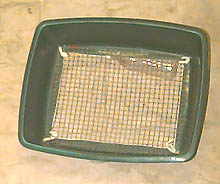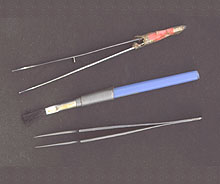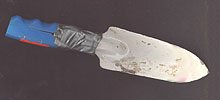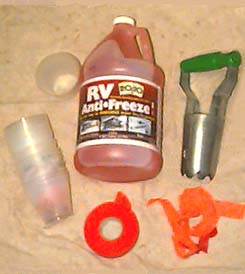Years and Expeditions
1986-9 WITH ALBUM
2000-01 WITH ALBUM
2017 WITH ALBUMS
2018 WITH ALBUMS
2019 WITH ALBUMS
2020 WITH ALBUMS
2021 WITH ALBUMS
2022 WITH ALBUMS
2023 WITH ALBUMS
2024 WITH RECENT ALBUMS
2025 NEW! WITH ALBUMS













Spider Collector's Journal
Narratives of Spider Collecting Trips
Copyright © 2005-24 by Rod CrawfordFollow the links in the center column to page after page of exciting accounts of expeditions in pursuit of elusive arachnids. Thrills! Chills! You won't want to miss this!
| Tools of the Trade |
Years and Expeditions 1986-9 WITH ALBUM 2000-01 WITH ALBUM 2017 WITH ALBUMS 2018 WITH ALBUMS 2019 WITH ALBUMS 2020 WITH ALBUMS 2021 WITH ALBUMS 2022 WITH ALBUMS 2023 WITH ALBUMS 2024 WITH RECENT ALBUMS 2025 NEW! WITH ALBUMS
|
Tools of the Trade |
 |
 |
|
| Sifter | Field forceps, brush, lab forceps | |
 |
 |
|
| Beating net | Field vials, permanent vials | |
 |
 |
|
| Collecting (surplus ammo) belt | Killing tube | |
 |
 |
|
| Berlese funnel | Field notebook and labels | |
 |
 |
|
| Trowel | GPS unit for label locality data | |
 |
 |
 |
| Microscope | Pitfall trap materials | Vial storage system |
The object of this page is simply to show what fun it is to be a "bug" collector! As editor of Scarabogram, newsletter of "Scarabs: The Bug Society," I report on field trips; mostly my own trips collecting spiders for the research collection at the Burke Museum. The notes linked above almost all appeared in Scarabogram in their original forms. References to the editor mean me; most other persons mentioned (except on Russian trips) are Scarabs members or Burke Museum volunteers. In earlier periods, many other trips occurred but were not reported in enough detail to be worth including here. The date of the field trip heads each paragraph. Maps showing the location of sites within Washington state follow the grid system outlined in the Washington Spider Checklist.
 |
| Spider collection coverage of Washington showing 1/10 degree lines |
You might well ask: what's the object of all this spider collecting? Well, the main idea is to find out what spider species occur in Washington, what habitats each one lives in, and how each one is distributed around the state. When I started in 1971, we knew virtually nothing about these things. Even now, there are still plenty of species we haven't found even once (I get new ones on most field trips), many others for which there are only 1-5 specimens known, and many parts of the state not yet sampled. The map at right shows collecting progress in Washington through March, 2024. Each red dot shows a 1/10 degree area with over 20 species known. Out of 2195 areas, 755 sampled, 1440 to go!
If readers have spider questions for the author, kindly check this out first:
"Spider Myths" will probably cause you to re-think your questions.
If you still have questions after you have read "Spider Myths"
(but only after you've read it), feel free to contact me at ![]() .
.
This page last updated 13 March, 2025